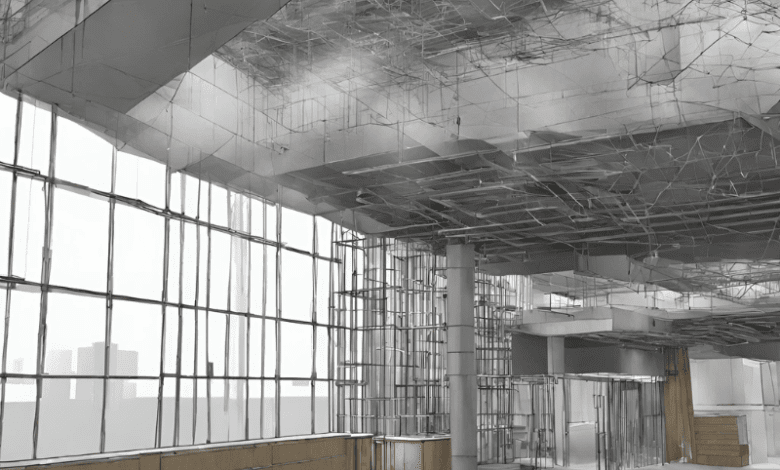BIM Services: Transforming Architectural Design and Construction

BIM is revolutionizing the architecture, engineering, and construction (AEC) industry by digitizing and integrating project information throughout the building lifecycle. BIM services encompass a range of digital tools and methodologies that enable collaborative design, visualization, simulation, and analysis. By centralizing project data in a virtual model, BIM enhances communication, coordination, and decision-making among project stakeholders.
This technology-driven approach streamlines traditional design and construction processes, improving efficiency, reducing errors, and optimizing project outcomes. BIM’s growing importance underscores its transformative potential in shaping the future of the AEC industry.
Understanding BIM
Building Information Modeling (BIM) is a digital approach to the design, construction, and management of buildings, integrating 3D modeling with data-rich information. Its fundamental principles involve creating a collaborative environment where project stakeholders can share and access information throughout the building lifecycle. Adopting BIM for architectural projects offers numerous benefits, including improved collaboration among multidisciplinary teams, enhanced visualization for better design understanding, and data-driven decision-making based on accurate and up-to-date project information. This technology empowers architects to create more efficient, sustainable, and cost-effective buildings while minimizing risks and maximizing project outcomes.

Key Components of BIM Services
1. 3D Modeling: Enables the creation of comprehensive digital representations of building components, aiding visualization and design coordination.
2. Clash Detection: Identifies conflicts and clashes between different building elements, preventing errors and rework during construction.
3. Quantity Takeoff: Automates the process of quantifying materials and components, improving accuracy in cost estimation and procurement.
4. Simulation and Analysis: Allows for virtual testing of building performance, such as energy efficiency and structural integrity, leading to optimized designs.
5. Construction Scheduling and Phasing: Facilitates detailed planning and sequencing of construction activities, enhancing project efficiency and coordination.
6. Facility Management Integration: Integrates BIM data into facility management systems, enabling efficient building operation and maintenance throughout its lifecycle.
The Impact of BIM on Architectural Design
BIM services are fundamentally transforming the architectural design process by offering a seamless workflow from conceptualization to construction documentation. Through BIM, architects can explore design options more efficiently, iterate rapidly, and visualize concepts in immersive 3D environments. Parametric modeling allows for the creation of flexible, adaptable designs driven by parameters and constraints, fostering innovative solutions to complex challenges.
Additionally, generative design harnesses computational algorithms to generate numerous design alternatives based on predefined goals and constraints, unlocking unprecedented levels of creativity and efficiency in architectural design. BIM empowers architects to push the boundaries of design exploration and deliver visionary, sustainable buildings.
BIM in Construction Management
BIM plays a pivotal role in construction management by revolutionizing scheduling, sequencing, and coordination processes. With BIM, construction teams can visualize project progress in real time, identify potential clashes, and optimize construction sequences to minimize delays. Case studies showcase how BIM services streamline workflows, reduce errors, and enhance project efficiency. For instance, through clash detection and 4D scheduling, projects achieve smoother coordination and improved resource utilization.
Additionally, BIM’s integration with construction management software enables seamless communication and data exchange, facilitating collaborative decision-making and ensuring projects stay on track and within budget.
Collaboration and Communication with BIM
BIM fosters collaboration among project stakeholders by providing a centralized platform for sharing and accessing project information. Architects, engineers, contractors, and owners can collaborate seamlessly, exchanging data and feedback throughout the project lifecycle. Collaborative BIM platforms offer real-time communication and coordination tools, allowing stakeholders to work together efficiently regardless of geographical location.
These platforms enable concurrent editing, version control, and issue tracking, ensuring everyone stays informed and aligned. By promoting transparency and accountability, BIM enhances teamwork, reduces conflicts, and ultimately leads to better-informed decision-making and successful project outcomes.
Challenges and Considerations
Implementing BIM services presents various challenges, including interoperability issues between different software platforms, complexities in data management, and the need for extensive training for stakeholders. To overcome these hurdles, it’s crucial to invest in interoperable software solutions, establish robust data management protocols, and provide comprehensive training programs.
Additionally, fostering a culture of collaboration and open communication among project team members is essential. By addressing these challenges head-on and embracing BIM best practices, organizations can maximize the benefits of BIM adoption, such as improved project efficiency, reduced costs, and enhanced decision-making capabilities.
Future Trends and Opportunities
The future of BIM technology holds exciting possibilities, including advancements such as cloud-based BIM, VR/AR integration, and digital twins. Cloud-based BIM platforms enable seamless collaboration and data access from anywhere, enhancing project flexibility and scalability. VR/AR integration revolutionizes design visualization and stakeholder engagement, offering immersive experiences and real-time feedback.
Digital twins create virtual replicas of buildings, enabling predictive analysis and ongoing performance monitoring. These trends are poised to revolutionize architectural design and construction, driving efficiency, innovation, and sustainability while reshaping the way buildings are conceptualized, designed, and managed.
Conclusion
BIM services have transformed architectural design and construction, revolutionizing workflows, enhancing collaboration, and driving innovation. At McLine Studios, we’ve witnessed firsthand the transformative power of BIM in delivering exceptional projects that exceed client expectations. As BIM continues to evolve, its role in shaping the future of the AEC industry becomes increasingly profound.
Embracing emerging trends such as cloud-based platforms, VR/AR integration, and digital twins, we anticipate even greater efficiency, sustainability, and creativity in architectural design and construction. With BIM at the forefront, we’re excited to continue pushing boundaries and delivering excellence in the built environment.



